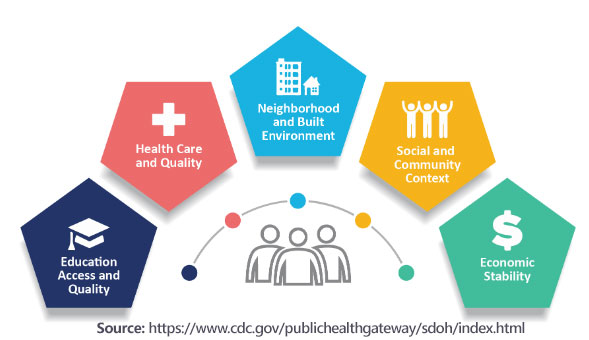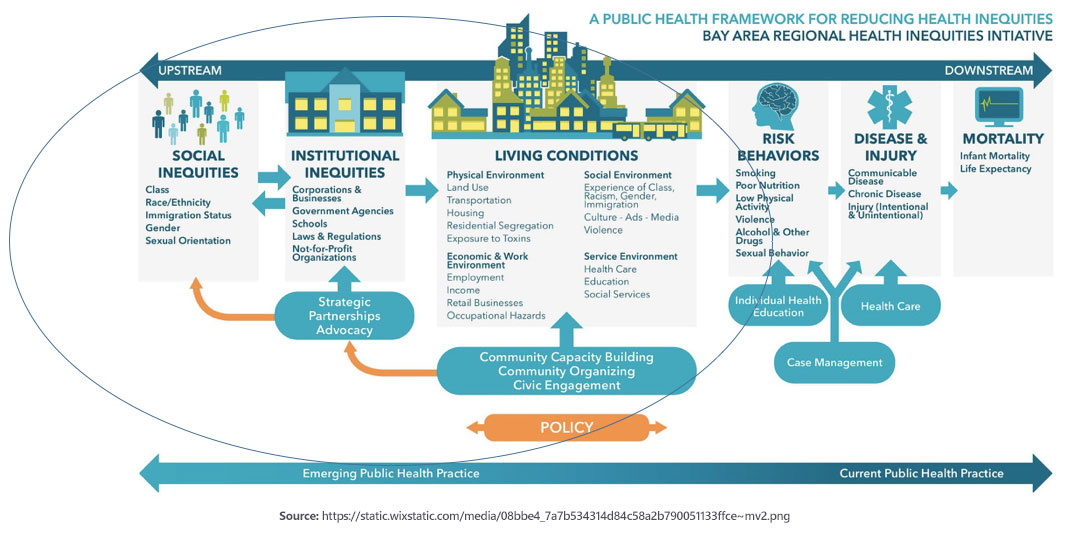Placing Social Determinants of Health in Context
The social determinants of health are the conditions in which people are born, grow, work, live, and age and the systems that shape these conditions of daily life. The Neighborhood Health Partnership Sociodemographic Profile Reports were developed in response to stakeholder feedback and need to learn and understand more about the living conditions of the people and neighborhoods they serve.
The Placing Social Determinants of Health in Context tools were developed to provide examples of evidence-informed linkages between living conditions and health care quality and outcomes. This tool can be used to help with grant applications, meetings with decision makers and stakeholders, health education efforts, and more! Click on the images below to learn about tools on mental health, diabetes, heart disease, cancer screening, obesity, and vaccinations.
Helpful Frameworks
Using a social determinants of health and health equity framework shows the many factors that impact health outcomes. This broader view of what drives health can expand our understanding of health-related issues and possible solutions.
Community priorities often align with the social determinants of health (commonly referred to as the SDoH). According to the World Health Organization (WHO), the social determinants of health are the “conditions in which people are born, grow, live, work and age.” These circumstances, which are shaped by the distribution of money, power, and resources, are mostly responsible for health inequities. Forming a complete picture of the health of a neighborhood requires recognizing: In the Bay Area Regional Health Inequities Initiative (BARHII) model, the social determinants of health can be shown as upstream causes (social inequities, institutional power, living conditions) that ultimately impact downstream outcomes (risk behaviors, disease and injury, mortality). The model presents the relationship between structural determinants of health, social determinants of health, health behaviors, and health outcomes. Using a model like BARHII can help you identify additional data needs and understand many of the factors that contribute to overall health in a neighborhood. For example, the NHP Health Outcomes and Care Reports provide health system and some sociodemographic data, but data on institutions (e.g. school, non-profits) are not available in the reports. Depending upon the health priority you are trying to address, you may want to seek out additional data to use in combination with NHP data reports. For additional considerations, see the Connecting to Other Data section below. Social Determinants of Health (SDoH)

Bay Area Regional Health Inequities Initiative (BARHII) Model

Examples of Using Reports for SDoH
To see examples of how reports can be used for Social Determinants of Health (SDoH), view the Examples page.

